Hoo boy, it's been a rough week as a moderator around these parts, but then that's what having opinions on the internet gets you. Fortunately I've managed to squeeze in a lot more The Witcher 3 this week, to the extent that I'm finally ready to tackle Skellige and its many treacherous mountains and islands. Sure didn't make it easy to get around over there, but if the intent was to faithfully recreate traversing a video game fantasy equivalent of the Hebrides, then mission accomplished. We saw in Dear Esther that there's not a whole lot out there besides rocks and meandering voiceovers.
Also, here's my solemn pledge for the following week's written content from yours truly: nothing Dark Souls 3 related, and thus no spoilers. Can't afford to buy any new games right now, but that's entirely incidental. I do this for my peeps.
New Games!
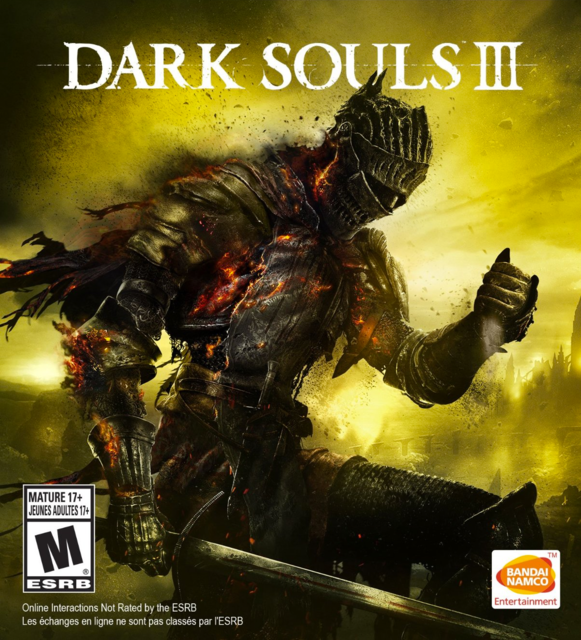
Last week was a huge release period if only because of the launch of the HTC Vive and a thousand Steam VR games that suddenly popped up out of nowhere, like Steam games tend to do. While this week is comparatively more quiet, it's also far more exciting for a regular console owner like myself. Naturally, the big headliner this week would be Dark Souls III, only slightly devalued by that bizarre half-busted Japanese premiere three weeks ago. Probably goes without saying that DS3 is one of my most anticipated playthroughs for 2016, though at the same time I'm actually fairly content to sit on it for a while - say, until my birthday in Autumn or around Xmas. I did only complete Bloodborne a few months ago, after all, and you want to pace these Souls games out a little with the amount of focus they demand from the player. It's not like an open-world game where you can go on auto-pilot for long stretches (yes, I'm still enjoying The Witcher 3, why'd you ask?). I couldn't really tell you more about Dark Souls III because I've gone on a complete media blackout, as is the norm, so let's just say I'm psyched to play it. You know, eventually.
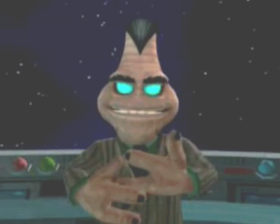
Because this week is such a glorious week for new games, I could say something similar to the above for the two other big releases this week: the reboot of the Ratchet & Clank series, which I believe ties into the new canon set by the motion picture due to appear later this month. I even made sure to get caught up on Ratchet & Clank by playing Nexuslast year, though it's not like we have to worry about following an ongoing narrative any more. What's weird is when you look at the voice cast for the game and movie, it's a mix of the standard video game voice actors and a bunch of Hollywood folk like Paul Giamatti, John Goodman, Sly Stallone and Rosario Dawson. Ratchet VA James Arnold Taylor has come a long way since Tidus and his fake laughing.
The other big name is the North American release of the 3DS JRPG sequel Bravely Second: End Layer. I've sadly yet to try its predecessor Bravely Default so I'm afraid Bravely Second's going to have to sit on the back burner for a while. Kinda missed my chance to jump on it months ahead of the Americans, actually, since it launched here back in February. Hey, but you know what I do have lying around somewhere? That Final Fantasy 4 Heroes thing that Bravely Default's developers (Matrix Software) put out years ago. No shame in being fashionably far behind. (That's an expression, right?)
Wiki!
Well, March '95 is in the bag, and so too is the first quarter of 1995. It's the second busiest quarter of the year, surpassed only by the typically insane holiday season at the year's end, so it does feel like I've made a substantial amount of progress over the past few weeks. It's probably not safe to think like that though: to effectively wiki, you need to take your time and make sure you aren't embellishing when covering the nitty-gritty of a game. It helps no-one at all when your information is inaccurate, so that means a lot of double-checking your research and data, not to mention ensuring that you aren't using one of the mistranslated titles GameFAQs uses. I mean, it's not exactly excising brain tumors or anything, but... well, ultimately, it really comes down to the fact that I'm loath to leave messes behind that others will need to clean up on my behalf. There's always a pang of guilt when I notice someone's fixed an error on a page I worked on.
Anyway, enough inside baseball. We have enough outside baseball games to worry about this time, for one, as we cover the final fifteen games of March 1995 and the first couple of April. Only two new pages this week: Esparks: Ijikuu Kara no Raihousha and Saikousoku Shikou Shogi Mahjong, which I've added to the usual list. Try and guess what the second of those games is about! I think you'll be pleasantly surprised.
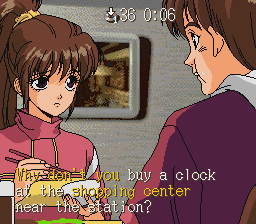
Moving on, we have some oddities to look at in the remaining fifteen games from last week's efforts. The most prominent would be the EMIT trilogy of visual novels, each of which have an audio CD companion: the idea being that you would skip to the appropriate track whenever a scene starts. That way you could get CD-quality voiceover and music on a Super Famicom with only the mild inconvenience of having to skip around to find the right track on a CD player every ten seconds. Actually it's because there's two audio tracks: one in Japanese and one in English. The story told by the EMIT games use very simple English because their secondary intent is as an educational tool for Japanese students learning the language. That also means that, were you to pick up all three games with their bundled audio CDs, you could understand them by setting either the subtitles to English or listening to the English audio. Of course, I'm not sure why you'd go to all that trouble for a relatively uninteresting visual novel unnecessarily spread across three carts, but hey. It's a neat and weird thing, and that's what I long to discover working on the wiki.
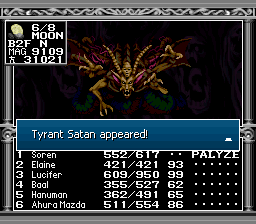
Elsewhere, we have Kyuuyaku Megami Tensei, which is to the first two NES Megami Tensei games that Super Mario All-Stars is to the NES Marios: an excuse to pretty them up with 16-bit graphics and bundle them together. Definitely worth a look if you're contemplating starting that series from the beginning, especially as it has a fan translation out there somewhere. There's also another YuYu Hakusho fighter - the last 16-bit one, actually, if the name YuYu Hakusho FINAL has any meaning - based on some of the later arcs if that's an anime you care about. There's the bizarre Pocky & Rocky also-ran Deae Tonosama Appare Ichiban, which I almost managed to sneak onto the Spotlight and also has a detailed HG101 article. Odder still is how there were two games based on the Serie A Italian national soccer league released on the same day by different Japanese publishers: Shijou Saikyou League Serie A: Ace Striker (TNN) and Super Formation Soccer 95: della Serie A (Human Entertainment). Finally, we have the superlative Metal Warriors, the LucasArts mech game that plays a lot like Masaya's Assault Suits series and in particular Assault Suits Valken, released on SNES in North America as Cybernator.
The Witcher 3: Wild Hunt!
Yep! Still! I've exhausted everything I wanted to talk about The Witcher 3: Wild Hunt's combat and game-within-a-game Gwent, so let's try to tiptoe around how Geralt's quest log works without spoiling anything. Fair warning, while I will absolutely avoid any details regarding story critical missions, I will be talking more vaguely about the side missions of The Witcher 3 and a bit more detail into the odd experience roadblocking system CD Projekt Red have set up to ensure that every critical story mission is tackled with a level-appropriate Geralt.
There's a curious structure to The Witcher 3's quest log, largely in part because of how much the game gives you to do. That means some necessary compartmentalization at the very least. Thus, missions tend to be split up into four categories: you have the main quests, of course, which sit at the very top and demands your attention most of all; you then have the miscellaneous secondary quests, which might involve helping out a friend or investigating something that no-one is explicitly hiring you to resolve; after that follows the Witcher Contracts, which is essentially Geralt performing his day job (or night job, depending on the target) and are built like police procedurals where you investigate the crime scene, talk to witnesses and prepare for a tough encounter with the monster culprit; finally, you have the treasure hunts, where you buy or find maps to useful equipment and have to track them down.
That's not quite the extent of the side-stuff, however. When obtaining most side-missions the game has to offer, you have to consult notice boards in various settlement locations across the game's maps of White Orchard, Velen, Novigrad and Skellige. These provide you with the Witcher contracts and a few other side missions, but they also add a whole mess of question marks to the map: these are "points of interest", and the player is free to run off and explore them like they would the icons on a Bethesda game's radar. They usually fall under hidden treasure (free shit, basically), guarded treasure (which can often involve fighting a monster that's way too strong for you at that moment, so be prepared to run), monster nests (a pain to deal with but a great source of monster alchemy ingredients), bandit camps (which can occasionally transform into new settlements for villagers, if you clear out the rabble first) and Places of Power. The last of those is the most valued, as these Places of Power not only buff one of your five Signs for thirty minutes of real-time but each brand new one discovered also gives you a building point for Geralt's skill trees. So while you might be hesitant to run around a map potentially triggering lethal encounters, it might be worth a quick dart around for those building points because they can be super useful early on.
That brings us the experience barricading. It's actually not always worth the trouble to go out looking for fights: you'll get a handful of experience for each monster fought if they're close enough to your level, and a handful more for blowing up nests or finding hidden treasure. Most of the game's XP comes from completing quests though, and only if they happen to be close to Geralt's level. Presently, I'm running into an issue where I'm close to leveling beyond any appreciable gain from side-quests I picked up half the game ago - once you're past five levels higher than a side-quest's recommended level, you'll get naught but peanuts for your efforts. It doesn't matter too much in the grand scheme of things, as the game will always ensure that you're at a decent level for the next story quest to come along - and, obviously, that's where you're going to earn the best XP rewards - but it's lead to an uncommon system where I'm being carefully guided from one side mission to the next.
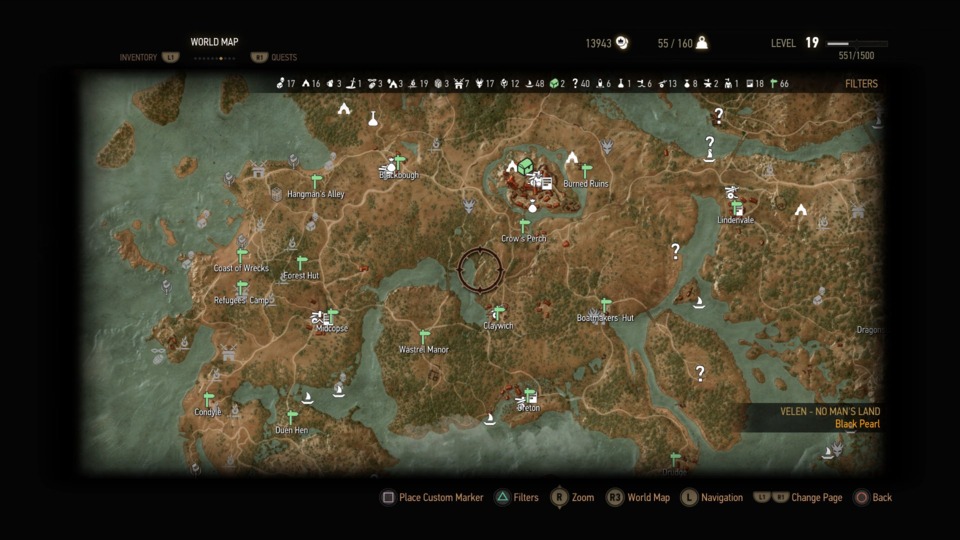
This is what I find most perplexing about The Witcher 3, though perhaps not necessarily in a bad way because it's really nothing like anything I've encountered before in an open-world RPG. You're essentially punished for not scheduling the order you complete side-stuff in the correct way: the game very much wants you to focus on the story until there's enough of an XP buffer that you'd be safe trying out the game's side content for a while. Once you've got a few more side-quests and other extracurricular activities completed, you'll see that you're starting to out-level the main progression again which also means that you're getting less and less benefit from side-missions, so it behooves you to frequently switch lanes to the core story missions and back. Compare this to something like Skyrim or Dragon Age: Inquisition, where they are happy to let you run around doing side-quests and overleveling to the point that it will completely eliminate any challenge the next few story missions might present. On the one hand, it's probably not a positive thing that an open-world game has a figurative leash to stop you from indulging in too much non-story-critical exploration if that happens to be your bag, though on the other it really doesn't hurt to rein in that sort of completionist behavior and keep the player focused before they can burn out and no longer want to see how the story ends. As an often narrowly-focused open-world RPG, The Witcher 3 frequently feels as if it's trying to have its sweetroll and eat it too.
Sideway: New York
Sideway: New York has been a pleasant surprise so far. I'm perhaps revealing too much of my process here, but I tend to randomly pick a game from a special category in my Steam library - one that was intended for May's all-month features - and try it out for a while to see if it clicks. Sideway has definitely clicked.
It's a 2D Indie platformer, though not so much of the puzzle kind, and its conceit is that a graffiti artist has been magically pulled into the 2D world of the wall art he helps create not unlike Kirby: Canvas Curse or The Legend of Zelda: A Link Between Worlds, and each of the game's stages are set upon the walls and roofs of downtown buildings across New York, often wrapping around in unexpected ways. The gravity tends to flip depending on which angle you enter a plane - if you came to a roof from the south wall, for instance, it'll be oriented so that south is down, but entering from the east wall will cause it to switch so that east is down instead, which may present a different path to travel. It's a lot more intuitive in motion, but it does afford the game a lot of opportunities to cleverly hide collectibles on stretches of wall that initially seem inaccessible. "3D" fixtures like drainpipes and AC units act as walls, and objects not connected to the building like garbage cans and crates can often hide secrets by messing with the player's perspective.
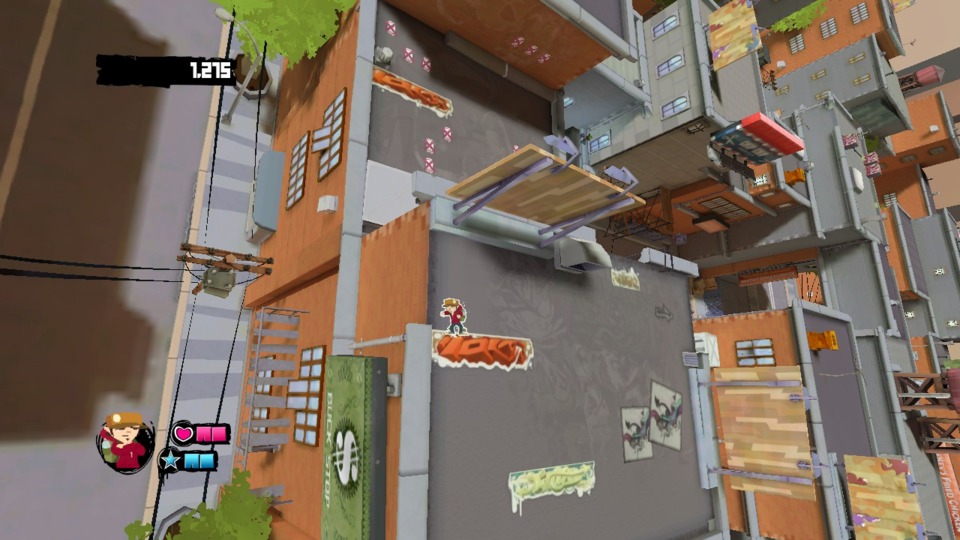
There's a few special conditions relating to the fact that the player is essentially a living piece of graffiti, most pressing of which is that other graffiti can kill you, such as elaborately spraypainted brambles or the game's various blob enemies. Water, too, is a hazard that becomes more prevalent as the game continues. New abilities are unlocked at a steady drip, and even after five stages (of a total of sixteen, if the map screen is anything to go by), there's a number left to find. These can range from Mega Man-style traversal power-ups like a slide that lets you get through narrow passages at the ground-level, the power to glide through the air or using special grapple points to swing through an area. I've also unlocked a few combat moves, giving the game something like an action-platformer combat versatility that Guacamelee! has. Often, there's a new enemy type that gets introduced after acquiring a new power that invariably requires that same power to defeat, like an invincible shielded enemy that can only be taken down with dive kicks. Nothing's invulnerable to the almighty power of dive kicks, as the Church of D-Leazy is quick to inform us.
Musically, Sideway leans hard on East coast hip-hop, and graphically closely imitates the street art it venerates. The resulting combination resembles Jet Set Radio, if only through a similar rebellious urban spirit, which I have to imagine was a major influence on this game. Checkpoints involve painting over the bad guy's tag, collectibles are spray cans and most of the platforms, enemies and other gameplay-central elements resemble animated graffiti art. I haven't had to fight a living Banksy piece yet or anything, but the game clearly knows its source material and has used that as a base upon which to build a decent 2D platformer with lots of mechanics, secrets and ideas with clearly plenty more left to show off. I'll be going back to it as soon as this Summary gets published.
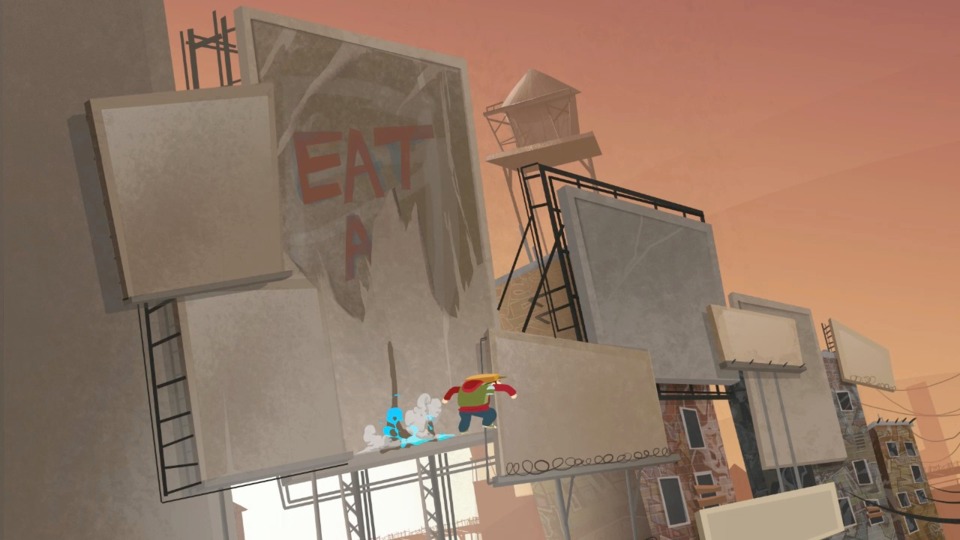
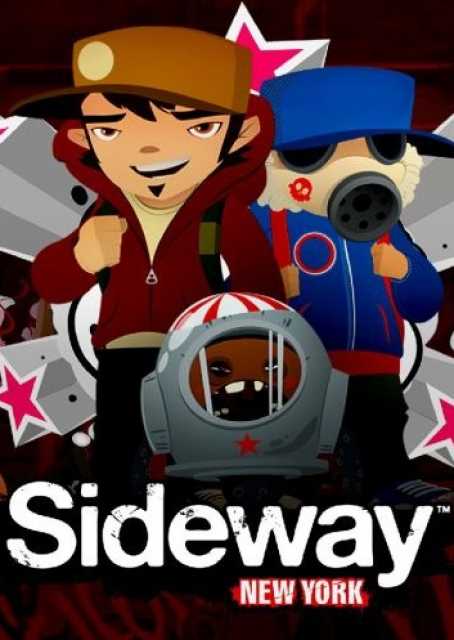
Log in to comment